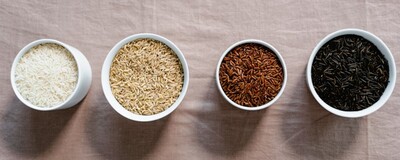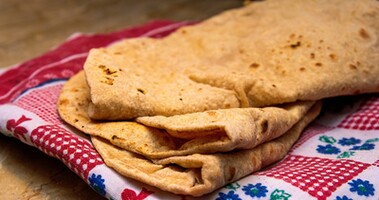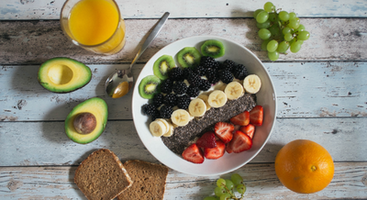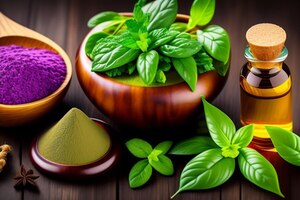
Ayurvedic Kitchari: A Dietary Staple for Wellness
One can argue that kitchari is in fact an integral part of the Ayurvedic way of life. Its mentions are sprinkled all throughout its ancient 5000-year texts. It is also central to the success of many Ayurvedic therapies and techniques. Kithcari is especially beneficial when one undergoes the process of Panchakarma, thus helping in detoxifying the entire body while eliminating excess ama completely.
It is also the most recommended food when one undertakes mono-fasting – when you eat only one type of food for several days. Kitchari is extremely nourishing and very easy to digest, which explains why it is prescribed by Ayurveda for Panchakarma and fasting.
Apart from the above merits, it is also very easy to prepare. All the ingredients you will ever need to make this one-pot dish can be easily procured from your nearest grocery store. In fact, you will find most of the ingredients you need already resting in your kitchen.
So, without much further ado, let’s investigate the ingredients needed to prepare kitchari and how you can make it in no time, without a hassle.
Key Ingredients for Making Kitchari: A Nutrient-Rich Ayurvedic Dish
- 1 Cup (split yellow) moong dal
- Approximately 6 cups of water
- ½ inch of ginger root chopped or grated
- ¼ mineral salt
- ½ coriander powder
- ½ turmeric powder
- ½ tsp. cumin powder
- ½ tsp. mustard seeds
- ½ tsp. cumin seeds
- 2 tsp. ghee
- Handful of cilantro leaves
- Assorted vegetables chopped (optional)
Kitchari Preparation for healthy Ayurvedic diet
Carefully wash and pick dal and rice to remove stones from the mixture. Wash at least in 2 rounds of water. Add 6 cups of water to the mixture of dal and rice. Cover and cook until the mixture becomes soft. Cook for around 20 minutes or so.
While the cooking is under process, you can chop any assortment of vegetables you like. We recommend you use vegetables that best suit your doshic constitution. Add this combination of vegetables to the cooked dal and rice and cook for 10 minutes more.
In a separate saucepan, sauté cumin and mustard seeds in 2 tsp. of ghee. Later you can add coriander powder, cumin powder, and turmeric powder to mix and stir them together in order to release the flavors. Add the dal, rice, and vegetable mixture to the stirred concoction of spice and mix well. Finally, garnish the dish with mineral salt and chopped cilantro. Your kitchari is now ready to serve and is best eaten fresh out of the stove.
Unlocking the Benefits: Kitchari and Ayurvedic Fasting Explained
- Kitchari is balancing for all constitution types – Vata, Pitta, and Kapha
- The split mung is easy to digest for even people with a weak digestive system
- The combination of rice and mung dal provides all the amino acids needed to form a complete protein
- Typically given to people who are sick, people undergoing cleansing of the GIT or Liver, the elderly, and babies because it is gentle on the digestive system
- Diet of primarily just Pongal for several days offers the digestive system a rest by making the diet extremely simple
- Once can add spices like cumin, coriander, ginger, fennel, and Himalayan salt to encourage strengthening of the agni or digestive fire
- Mung dal has an astringent (dry) quality. This astringency has a natural pulling action that helps to remove toxic build up from the intestinal lining
- Kitchari also loosens and liquefies toxins (ama) during the second stage of digestion and makes it easier to remove
- The split mung beans provide enough fiber (over 15 grams per 1-cup serving) to move these toxins through the G.I. tract and out of the body
Kitchari Delight: Fun and Fascinating Facts About This Ayurvedic Dish
The dish holds immense ritual prominence in India and a variety of festivals it celebrates. It is the most served dish during festivals like Makar Sakranti, Durga Puja Bhog, and Bhandaras. In fact, it is the very first thing fed to babies in many households across India.
Kitchari has also gone on to inspire many other cuisines all across the world, that borrow a thing or two from this Ayurvedic favorite. There is a very popular Anglo-Indian breakfast dish named Kedegree, Said to be inspired by Kitchadi, it is a mushy amalgamation of boiled rice, butter, sultanas, boiled eggs, curry powder and herbs.
There are many varieties of Kitchari’s available today. From bajra kitchari, to sabudhana kitchadi, there are a plethora of different options to satiate different taste buds.
The Bottom Line
Kitchadi is a unique food recommended by Ayurveda. Normally, Ayurveda categorizes food into three categories. Poison- food you should avoid, Medicine – food to cure ailments, Neutral – food for comfort and nourishment of the body.
Kitchadi is both a Medicine and Neutral food. Medicine because it has several health benefits and id extremely crucial in the process of body cleansing, and neutral because it is a great option for comfort food that relieves stress and provides full-body nourishment due to its mixture of ingredients. As is quite apparent from the above recipes, Kitchadi is very easy to prepare and be made by practically anyone. It is your simple answer to many problems plaguing your body. It is very easy to incorporate in your diet, especially when you are going through a detoxification process, or simply on a diet to manage your weight.
The recipe for Kitchadi can be customized to best suit your disha type. You can consult your Ayurvedic practitioner to understand what recipe of Kitchadi should you go with to best pacify your dosha type and reap maximum health benefits in the process.
Kitchari is the perfect tridoshic balanced food that packs enough protein to give you both strength and vitality. It is beneficial for the nourishment of body tissues and is impeccable when it comes to detoxification and de-aging of cells. If you haven’t tried kitchari already, then you have no idea what your missing out on. It is time you incorporate this fantastic Ayurvedic comfort food in your diet and experience a better quality of life in the process.
Ayurveda Tip
Turmeric is one of the key ingredients of Kichari. You can visit https://happydiyhome.com/turmeric-plant/ to look at a comprehensive guide on how to grow turmeric at home.
Note: The information in this article is intended for your educational use only and is not a substitute for professional medical advice, diagnosis, or treatment. Always seek the advice of your physician or other qualified health providers with any questions you may have regarding a medical condition and before undertaking any diet, supplement, fitness, or other health programs.






